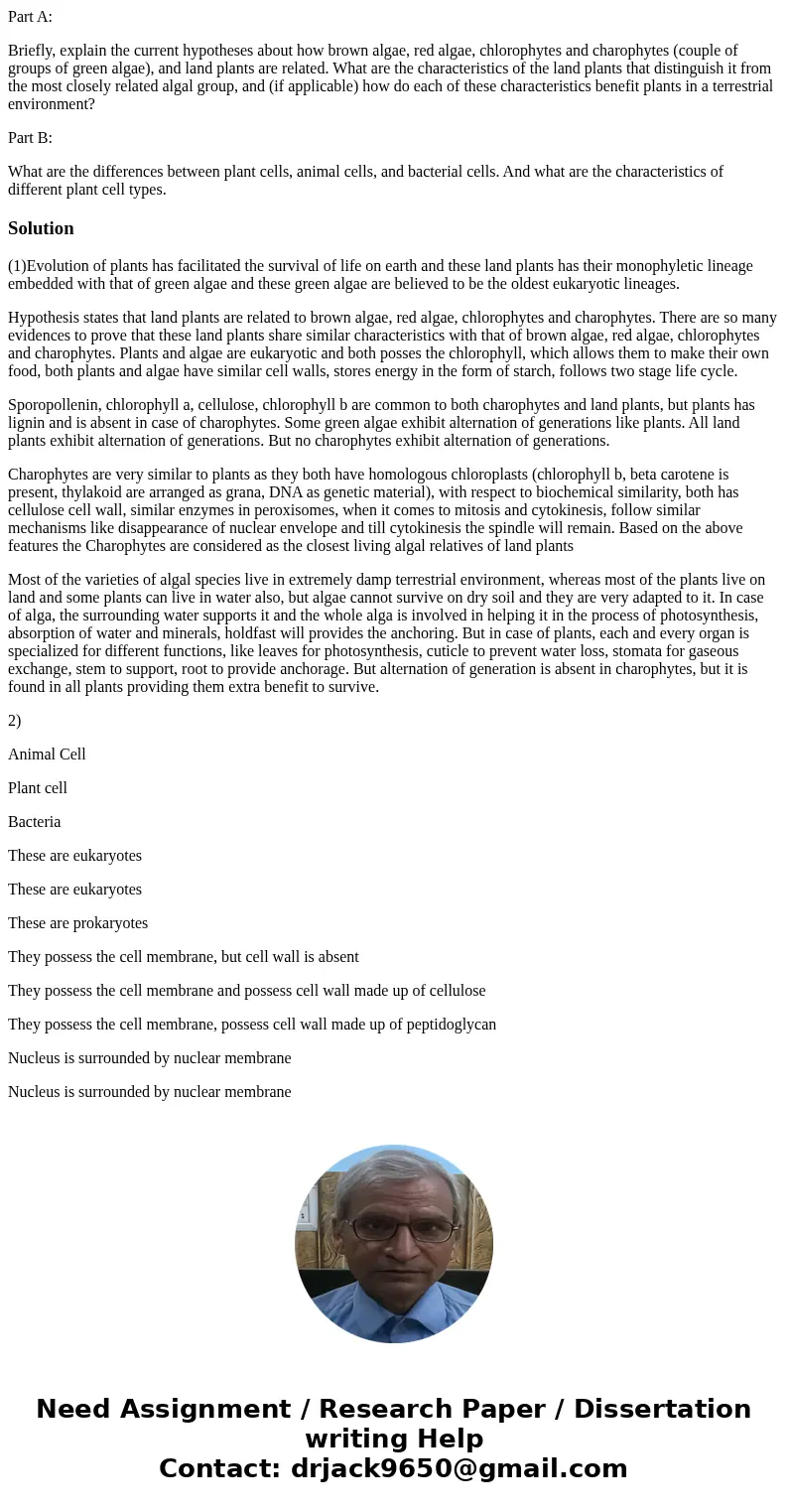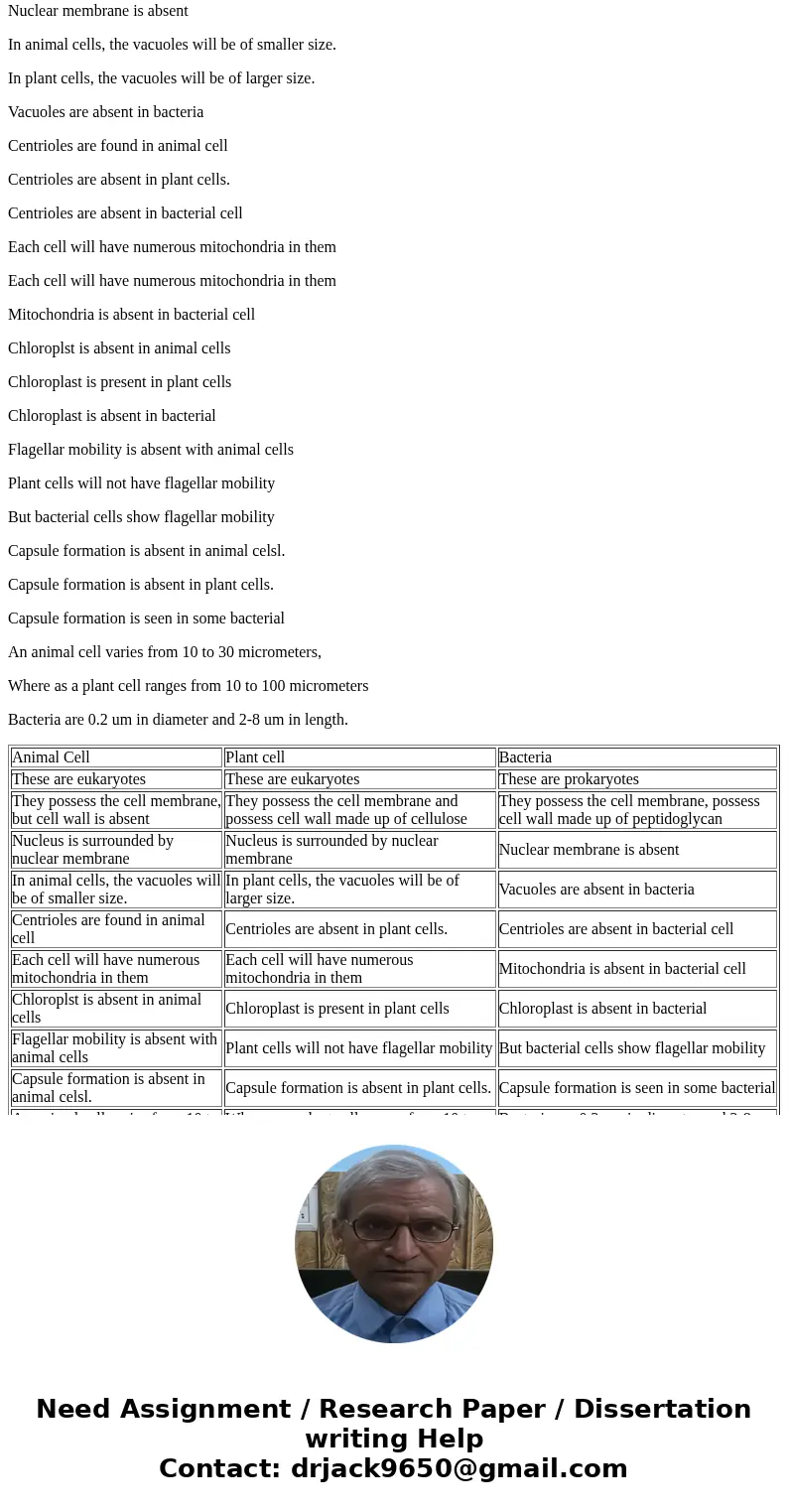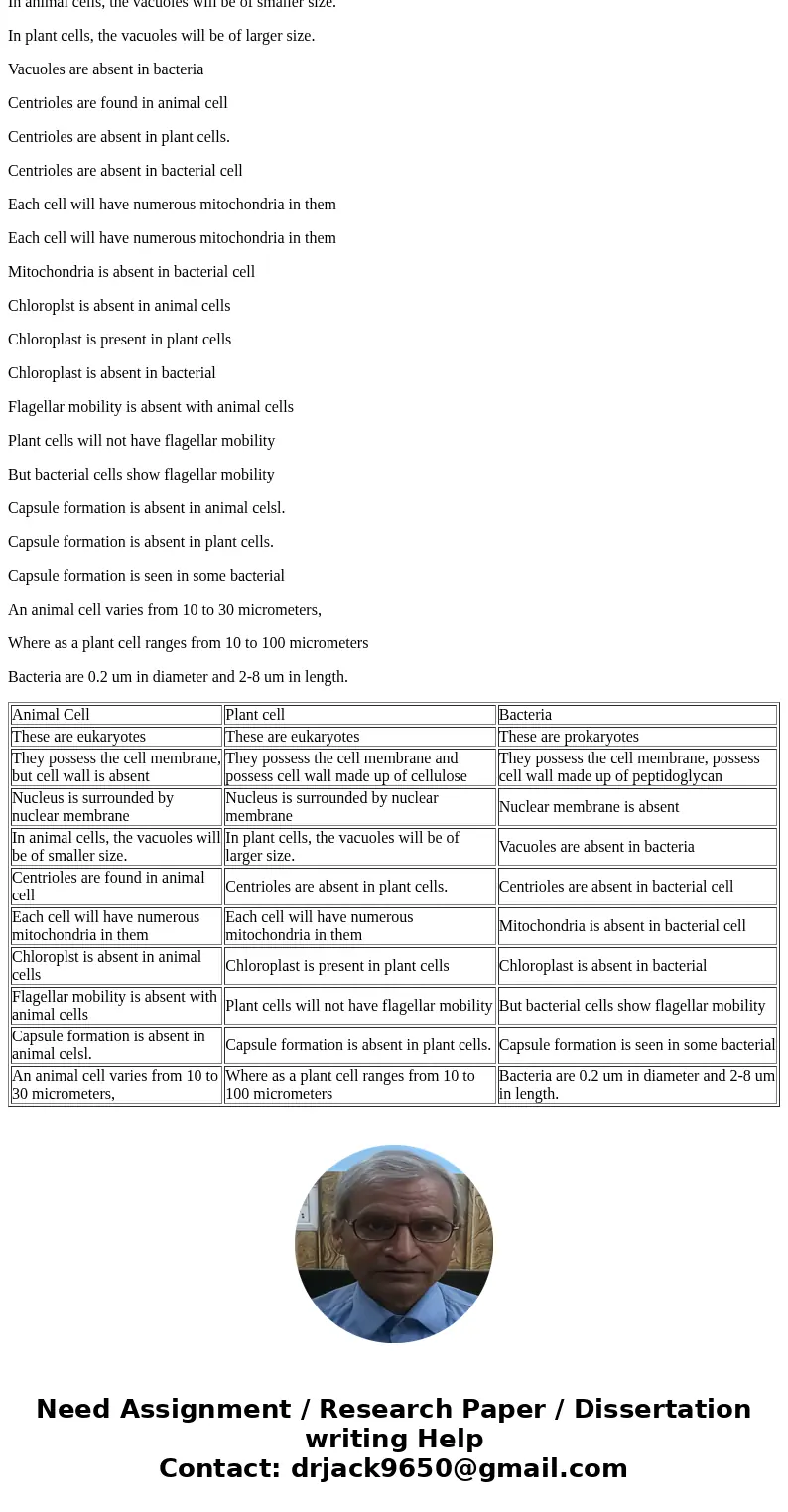Part A Briefly explain the current hypotheses about how brow
Part A:
Briefly, explain the current hypotheses about how brown algae, red algae, chlorophytes and charophytes (couple of groups of green algae), and land plants are related. What are the characteristics of the land plants that distinguish it from the most closely related algal group, and (if applicable) how do each of these characteristics benefit plants in a terrestrial environment?
Part B:
What are the differences between plant cells, animal cells, and bacterial cells. And what are the characteristics of different plant cell types.
Solution
(1)Evolution of plants has facilitated the survival of life on earth and these land plants has their monophyletic lineage embedded with that of green algae and these green algae are believed to be the oldest eukaryotic lineages.
Hypothesis states that land plants are related to brown algae, red algae, chlorophytes and charophytes. There are so many evidences to prove that these land plants share similar characteristics with that of brown algae, red algae, chlorophytes and charophytes. Plants and algae are eukaryotic and both posses the chlorophyll, which allows them to make their own food, both plants and algae have similar cell walls, stores energy in the form of starch, follows two stage life cycle.
Sporopollenin, chlorophyll a, cellulose, chlorophyll b are common to both charophytes and land plants, but plants has lignin and is absent in case of charophytes. Some green algae exhibit alternation of generations like plants. All land plants exhibit alternation of generations. But no charophytes exhibit alternation of generations.
Charophytes are very similar to plants as they both have homologous chloroplasts (chlorophyll b, beta carotene is present, thylakoid are arranged as grana, DNA as genetic material), with respect to biochemical similarity, both has cellulose cell wall, similar enzymes in peroxisomes, when it comes to mitosis and cytokinesis, follow similar mechanisms like disappearance of nuclear envelope and till cytokinesis the spindle will remain. Based on the above features the Charophytes are considered as the closest living algal relatives of land plants
Most of the varieties of algal species live in extremely damp terrestrial environment, whereas most of the plants live on land and some plants can live in water also, but algae cannot survive on dry soil and they are very adapted to it. In case of alga, the surrounding water supports it and the whole alga is involved in helping it in the process of photosynthesis, absorption of water and minerals, holdfast will provides the anchoring. But in case of plants, each and every organ is specialized for different functions, like leaves for photosynthesis, cuticle to prevent water loss, stomata for gaseous exchange, stem to support, root to provide anchorage. But alternation of generation is absent in charophytes, but it is found in all plants providing them extra benefit to survive.
2)
Animal Cell
Plant cell
Bacteria
These are eukaryotes
These are eukaryotes
These are prokaryotes
They possess the cell membrane, but cell wall is absent
They possess the cell membrane and possess cell wall made up of cellulose
They possess the cell membrane, possess cell wall made up of peptidoglycan
Nucleus is surrounded by nuclear membrane
Nucleus is surrounded by nuclear membrane
Nuclear membrane is absent
In animal cells, the vacuoles will be of smaller size.
In plant cells, the vacuoles will be of larger size.
Vacuoles are absent in bacteria
Centrioles are found in animal cell
Centrioles are absent in plant cells.
Centrioles are absent in bacterial cell
Each cell will have numerous mitochondria in them
Each cell will have numerous mitochondria in them
Mitochondria is absent in bacterial cell
Chloroplst is absent in animal cells
Chloroplast is present in plant cells
Chloroplast is absent in bacterial
Flagellar mobility is absent with animal cells
Plant cells will not have flagellar mobility
But bacterial cells show flagellar mobility
Capsule formation is absent in animal celsl.
Capsule formation is absent in plant cells.
Capsule formation is seen in some bacterial
An animal cell varies from 10 to 30 micrometers,
Where as a plant cell ranges from 10 to 100 micrometers
Bacteria are 0.2 um in diameter and 2-8 um in length.
| Animal Cell | Plant cell | Bacteria |
| These are eukaryotes | These are eukaryotes | These are prokaryotes |
| They possess the cell membrane, but cell wall is absent | They possess the cell membrane and possess cell wall made up of cellulose | They possess the cell membrane, possess cell wall made up of peptidoglycan |
| Nucleus is surrounded by nuclear membrane | Nucleus is surrounded by nuclear membrane | Nuclear membrane is absent |
| In animal cells, the vacuoles will be of smaller size. | In plant cells, the vacuoles will be of larger size. | Vacuoles are absent in bacteria |
| Centrioles are found in animal cell | Centrioles are absent in plant cells. | Centrioles are absent in bacterial cell |
| Each cell will have numerous mitochondria in them | Each cell will have numerous mitochondria in them | Mitochondria is absent in bacterial cell |
| Chloroplst is absent in animal cells | Chloroplast is present in plant cells | Chloroplast is absent in bacterial |
| Flagellar mobility is absent with animal cells | Plant cells will not have flagellar mobility | But bacterial cells show flagellar mobility |
| Capsule formation is absent in animal celsl. | Capsule formation is absent in plant cells. | Capsule formation is seen in some bacterial |
| An animal cell varies from 10 to 30 micrometers, | Where as a plant cell ranges from 10 to 100 micrometers | Bacteria are 0.2 um in diameter and 2-8 um in length. |



 Homework Sourse
Homework Sourse